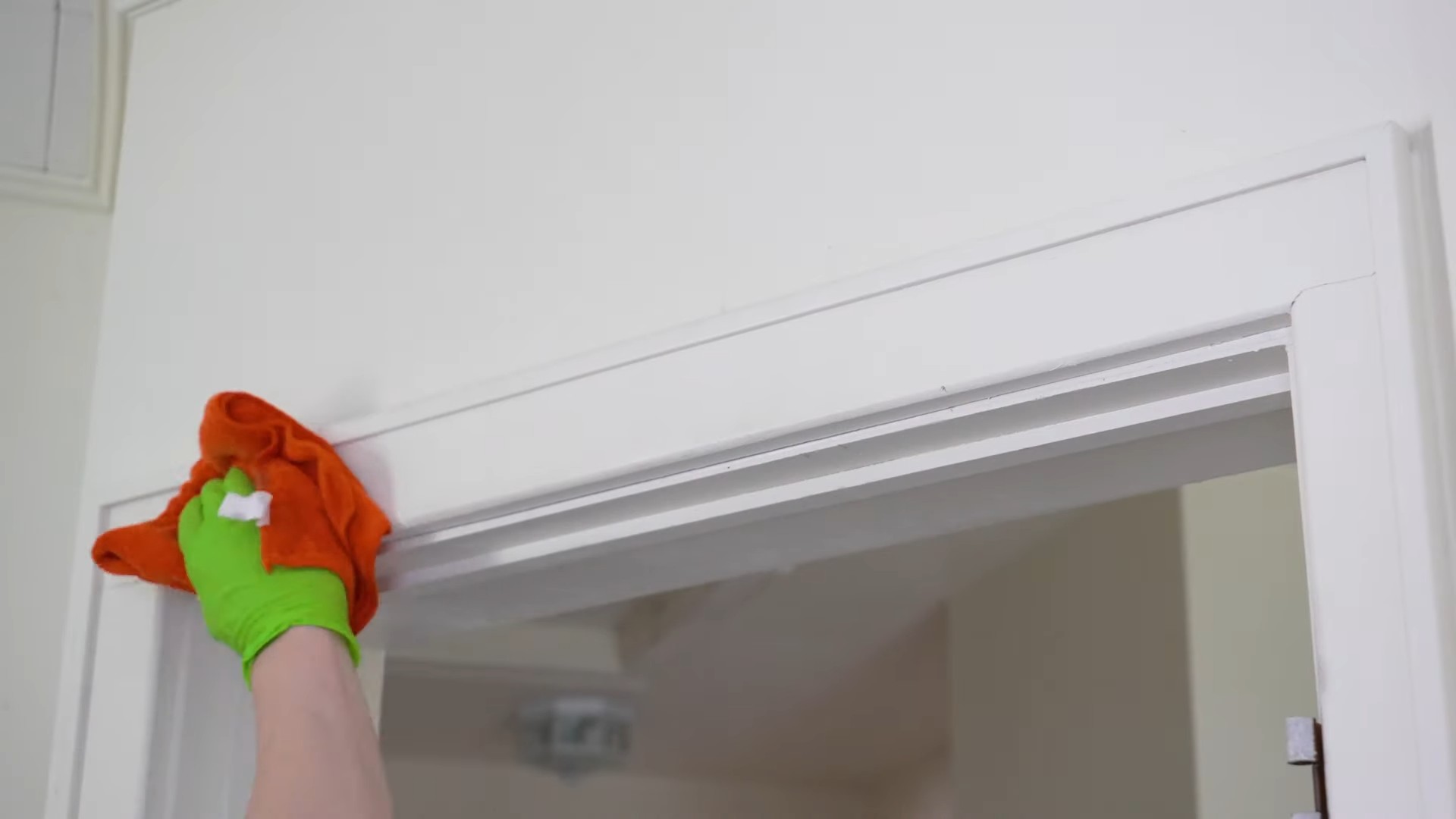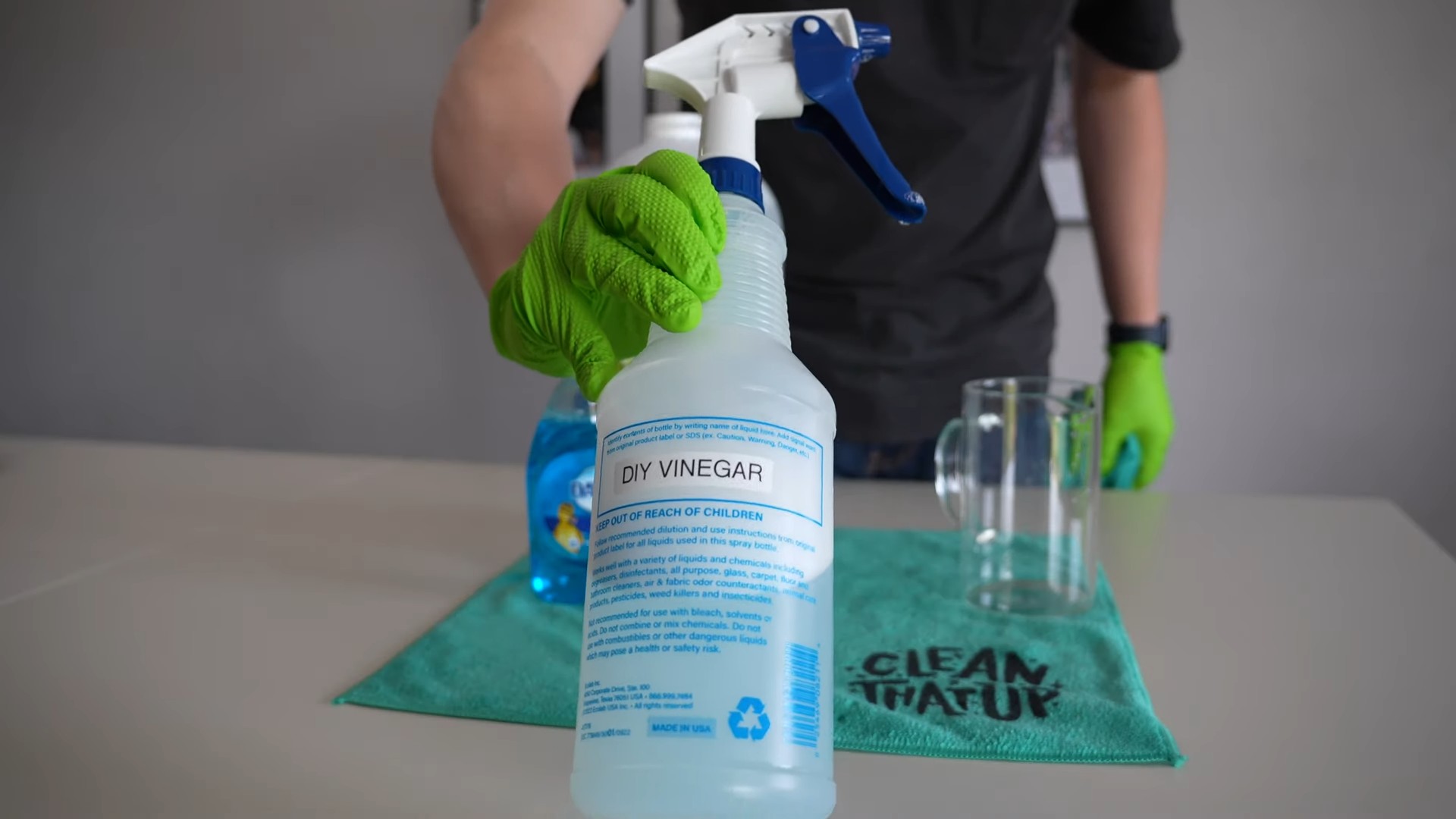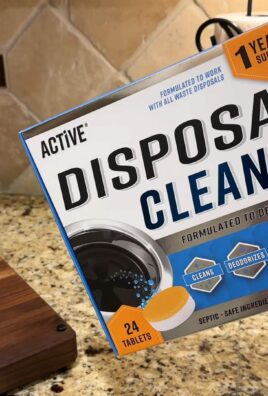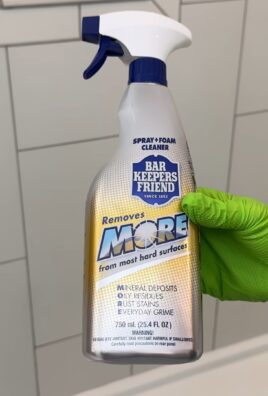Vinegar Cleaning Solutions: Unlock the secret weapon in your cleaning arsenal! Are you tired of harsh chemicals and sky-high prices for cleaning products? I know I was! That’s why I dove headfirst into the world of DIY cleaning, and let me tell you, it’s been a game-changer.
For centuries, vinegar has been a staple in households, not just for cooking, but also for its incredible cleaning properties. Think back to your grandmother’s cleaning routines – chances are, vinegar played a starring role! This humble ingredient boasts a rich history, dating back to ancient civilizations who recognized its potent antibacterial and disinfecting qualities. It’s a testament to the power of simple, natural solutions.
In today’s world, where we’re all striving for a healthier and more sustainable lifestyle, embracing vinegar cleaning solutions is more relevant than ever. We’re constantly bombarded with advertisements for expensive, chemical-laden cleaners, but the truth is, you can achieve sparkling results with a fraction of the cost and environmental impact. This article will equip you with easy-to-follow DIY recipes and hacks, empowering you to create your own effective and eco-friendly cleaning products. Say goodbye to harsh chemicals and hello to a cleaner, greener home – and a lighter wallet!

DIY Vinegar Cleaning Solutions: Your Guide to a Sparkling Home
Hey there, fellow DIY enthusiasts! I’m so excited to share some of my favorite vinegar cleaning solutions with you. Vinegar is a powerhouse cleaner, and it’s incredibly affordable and eco-friendly. Forget those harsh chemicals – let’s get cleaning with the magic of vinegar!
General Cleaning Powerhouse: All-Purpose Vinegar Spray
This is my go-to for everyday cleaning. It’s simple, effective, and smells much better than straight vinegar (trust me!).
What you’ll need:
* Spray bottle
* White distilled vinegar
* Water
* Essential oils (optional, but recommended for a pleasant scent – I love lemon, lavender, or tea tree)
Step-by-step instructions:
1. Prepare the bottle: Make sure your spray bottle is clean and empty. I usually rinse mine out with hot water before starting.
2. Mix the solution: In the spray bottle, combine equal parts white distilled vinegar and water. For example, if you’re using a 16-ounce bottle, add 8 ounces of vinegar and 8 ounces of water.
3. Add essential oils (optional): If you want to add a scent, add 10-20 drops of your favorite essential oil. I find that citrus oils like lemon or orange work best at masking the vinegar smell. Lavender and tea tree also have antibacterial properties, which is a bonus!
4. Shake it up: Close the spray bottle tightly and shake well to combine all the ingredients.
5. Start cleaning: Spray the solution onto surfaces like countertops, sinks, appliances, and floors (test in an inconspicuous area first!). Let it sit for a few minutes to disinfect, then wipe clean with a damp cloth or sponge.
Tips and tricks:
* Don’t use on marble or granite: Vinegar is acidic and can etch natural stone surfaces.
* Test first: Always test the solution in an inconspicuous area before cleaning the entire surface, especially on painted or delicate materials.
* Adjust the ratio: For tougher stains, you can increase the amount of vinegar in the solution.
* Storage: Store the spray bottle in a cool, dark place. The solution should last for several months.
Tackling Grime: Vinegar and Baking Soda Paste
This dynamic duo is perfect for tackling stubborn grime and buildup in your kitchen and bathroom.
What you’ll need:
* Baking soda
* White distilled vinegar
* Small bowl
* Sponge or scrub brush
Step-by-step instructions:
1. Create the paste: In a small bowl, mix baking soda and vinegar until you form a thick paste. The ratio will vary depending on the consistency you want, but I usually start with about 1/4 cup of baking soda and add vinegar slowly until I get a good paste.
2. Apply the paste: Apply the paste to the area you want to clean. This works great on grout, oven doors, stovetops, and sinks.
3. Let it sit: Let the paste sit for 15-20 minutes to allow the baking soda and vinegar to work their magic. You’ll see some fizzing – that’s a good sign!
4. Scrub and rinse: Use a sponge or scrub brush to scrub the area thoroughly. The grime should loosen easily.
5. Rinse with water: Rinse the area with clean water to remove any remaining paste and grime.
6. Dry: Dry the surface with a clean cloth.
Tips and tricks:
* For extra tough stains: Let the paste sit for longer, even overnight.
* Grout cleaning: Use an old toothbrush to scrub grout lines.
* Oven cleaning: Apply the paste to the inside of your oven, avoiding the heating elements. Let it sit overnight, then scrub and rinse thoroughly.
* Drain cleaning: Pour the paste down clogged drains, followed by hot water. This can help to break down grease and debris.
Window and Glass Cleaner: Streak-Free Shine
Say goodbye to streaks with this simple vinegar window cleaner.
What you’ll need:
* Spray bottle
* White distilled vinegar
* Water
* Microfiber cloth
Step-by-step instructions:
1. Prepare the solution: In a spray bottle, mix equal parts white distilled vinegar and water.
2. Spray the windows: Spray the solution onto your windows or glass surfaces.
3. Wipe clean: Use a clean microfiber cloth to wipe the windows dry. Microfiber cloths are key to achieving a streak-free shine.
4. Buff (optional): For an extra sparkle, buff the windows with a dry microfiber cloth.
Tips and tricks:
* Avoid cleaning in direct sunlight: The solution can dry too quickly and leave streaks.
* Use a squeegee: For large windows, a squeegee can help to remove the solution evenly and prevent streaks.
* Clean your microfiber cloths regularly: Dirty cloths can leave streaks.
* Newspaper alternative: Some people swear by using crumpled newspaper to clean windows. Give it a try!
Laundry Booster: Freshen and Brighten
Vinegar can be a great addition to your laundry routine.
What you’ll need:
* White distilled vinegar
* Washing machine
Step-by-step instructions:
1. Add vinegar to the wash: Add 1/2 cup of white distilled vinegar to your washing machine’s fabric softener dispenser or directly into the drum during the rinse cycle.
2. Wash as usual: Run your washing machine as usual.
Benefits of using vinegar in laundry:
* Freshens clothes: Vinegar helps to neutralize odors and leave your clothes smelling fresh.
* Brightens colors: Vinegar can help to brighten colors and prevent them from fading.
* Softens fabrics: Vinegar acts as a natural fabric softener.
* Removes detergent residue: Vinegar helps to remove detergent residue from your clothes, which can make them feel softer and less itchy.
* Cleans your washing machine: Vinegar can help to clean and disinfect your washing machine.
Tips and tricks:
* Don’t use with bleach: Never mix vinegar with bleach, as this can create toxic fumes.
* Test on delicate fabrics: Test vinegar on a small, inconspicuous area of delicate fabrics before washing the entire garment.
* For heavily soiled clothes: Soak clothes in a solution of vinegar and water before washing.
Deodorizing Magic: Vinegar Air Freshener
Get rid of unwanted odors with this simple vinegar air freshener.
What you’ll need:
* Spray bottle
* White distilled vinegar
* Water
* Essential oils (optional)
Step-by-step instructions:
1. Prepare the solution: In a spray bottle, mix equal parts white distilled vinegar and water.
2. Add essential oils (optional): Add 10-20 drops of your favorite essential oil for a pleasant scent.
3. Spray the air: Spray the solution into the air to neutralize odors.
Tips and tricks:
* Use in smelly areas: This works great in bathrooms, kitchens, and pet areas.
* Don’t spray directly on fabrics: Vinegar can stain some fabrics.
* Experiment with different essential oil blends: Try different combinations of essential oils to create your own signature scent.
* Vinegar smell dissipates quickly: Don’t worry about your house smelling like vinegar for long. The smell will dissipate quickly, leaving behind a fresh, clean scent (especially if you use essential oils).
Coffee Maker Cleaner: Keep it Brewing
Keep your coffee maker running smoothly with a vinegar cleaning.
What you’ll need:
* White distilled vinegar
* Water
* Coffee maker
Step-by-step instructions:
1. Prepare the solution: Fill the coffee maker’s water reservoir with equal parts white distilled vinegar and water.
2. Run a brewing cycle: Run a full brewing cycle with the vinegar solution.
3. Rinse with water: Run two or three brewing cycles with fresh water to rinse out any remaining vinegar.
Tips and tricks:
* Frequency: Clean your coffee maker with vinegar every 1-3 months, depending on how often you use it.
* For stubborn buildup: Let the vinegar solution sit in the reservoir for an hour before running the brewing cycle.
* Descaling: Vinegar helps to descale your coffee maker, removing mineral deposits that can affect its performance.
Microwave Marvel: Steam Cleaning Power
Easily clean your microwave with the power of vinegar steam.
What you’

Conclusion
So, there you have it! Ditching those expensive, chemical-laden cleaners and embracing the power of vinegar cleaning solutions is not just a trend; it’s a smart, sustainable, and surprisingly effective way to keep your home sparkling. We’ve explored the versatility of vinegar, from tackling stubborn grime in the kitchen to banishing hard water stains in the bathroom, and even refreshing your laundry. The benefits are undeniable: it’s budget-friendly, readily available, and significantly reduces your exposure to harsh chemicals that can be harmful to both your health and the environment.
But the real magic lies in the adaptability of these DIY recipes. Feel free to experiment with different essential oil combinations to create your signature scent. Lavender and lemon offer a calming and refreshing aroma, while tea tree oil adds an extra boost of antibacterial power. For tougher stains, consider increasing the concentration of vinegar or letting the solution sit for a longer period before wiping clean. Remember to always test your vinegar cleaning solutions on an inconspicuous area first, especially on delicate surfaces like marble or granite.
Beyond the basic recipes, consider these variations:
* **Citrus Infusion:** Infuse your vinegar with citrus peels (lemon, orange, grapefruit) for a few weeks to create a naturally scented and even more potent cleaner. The citric acid in the peels adds extra cleaning power.
* **Herb-Infused Vinegar:** Similar to citrus infusion, try infusing vinegar with herbs like rosemary, thyme, or mint for a unique scent and potential antibacterial benefits.
* **Vinegar and Baking Soda Paste:** For particularly stubborn stains or baked-on grime, create a paste of vinegar and baking soda. Apply the paste to the affected area, let it sit for a few minutes, and then scrub gently.
* **Vinegar Rinse for Hair:** Diluted vinegar can be used as a final rinse after shampooing to remove buildup and leave your hair shiny and smooth.
Ultimately, the best way to discover the full potential of vinegar cleaning solutions is to try them yourself. We encourage you to start with one of the simple recipes outlined above and gradually incorporate more vinegar-based cleaners into your routine. You might be surprised at how effective and satisfying it is to clean your home with a natural, affordable, and eco-friendly alternative.
We’re confident that once you experience the cleaning power of vinegar, you’ll be a convert. But don’t just take our word for it! We’d love to hear about your experiences with these DIY cleaning solutions. Share your tips, tricks, and favorite recipes in the comments below. Let’s build a community of eco-conscious cleaners who are passionate about creating a healthier and more sustainable home. What are you waiting for? Grab that bottle of vinegar and get cleaning!
Frequently Asked Questions (FAQs)
Is vinegar safe to use on all surfaces?
No, vinegar is not safe to use on all surfaces. Avoid using vinegar on natural stone surfaces like marble, granite, and limestone, as the acidity can etch and damage them. It’s also best to avoid using vinegar on waxed furniture, as it can strip the wax finish. Always test vinegar cleaning solutions on an inconspicuous area first to ensure they don’t cause any damage or discoloration. Wood surfaces should be tested as well, and if used, diluted vinegar should be applied sparingly and wiped dry immediately.
What type of vinegar is best for cleaning?
White distilled vinegar is generally considered the best type of vinegar for cleaning. It’s inexpensive, readily available, and has a consistent acidity level (usually around 5%). Apple cider vinegar can also be used, but it has a stronger odor and may leave a slight residue. Avoid using flavored or colored vinegars, as they may contain additives that could stain or damage surfaces.
Can I mix vinegar with bleach?
Never mix vinegar with bleach! This combination creates chlorine gas, which is highly toxic and can be fatal. Always use vinegar and bleach separately and never in the same cleaning solution.
How do I get rid of the vinegar smell?
The vinegar smell will dissipate quickly after cleaning. To help speed up the process, you can open windows to ventilate the area. You can also add a few drops of your favorite essential oil to the vinegar solution to mask the odor. Citrus peels infused in the vinegar also help to create a more pleasant scent.
How long will a vinegar cleaning solution last?
Vinegar cleaning solutions can last for a very long time, essentially indefinitely, as vinegar is a natural preservative. However, if you’ve added essential oils or other ingredients, the solution may degrade over time. It’s best to store your vinegar cleaning solutions in a cool, dark place and use them within a few months for optimal effectiveness and scent.
Can I use vinegar to clean my washing machine?
Yes, vinegar is an excellent natural cleaner for washing machines. To clean your washing machine with vinegar, add 2 cups of white distilled vinegar to the detergent dispenser and run a hot water cycle. This will help to remove detergent buildup, mildew, and odors. You can also add 1/2 cup of baking soda to the drum for extra cleaning power.
Is vinegar effective against mold?
Yes, vinegar is effective against many types of mold. To kill mold with vinegar, spray undiluted white distilled vinegar onto the affected area and let it sit for an hour. Then, scrub the area with a brush and wipe clean. Be sure to ventilate the area well while cleaning. For porous surfaces, you may need to repeat the process several times.
Can I use vinegar to clean my dishwasher?
Yes, you can use vinegar to clean your dishwasher. To clean your dishwasher with vinegar, place a dishwasher-safe cup filled with white distilled vinegar on the top rack and run a hot water cycle. This will help to remove food particles, mineral deposits, and odors.
What are some other uses for vinegar cleaning solutions?
Vinegar cleaning solutions can be used for a wide variety of cleaning tasks, including:
* Cleaning windows and mirrors
* Removing hard water stains from showerheads and faucets
* Cleaning coffee makers and kettles
* Deodorizing garbage disposals
* Cleaning microwave ovens
* Removing stickers and adhesive residue
* Cleaning cutting boards
What if my stain is not coming off with vinegar?
Some stains are more stubborn than others and may require a stronger cleaning solution or a different approach. For particularly difficult stains, try using a paste of vinegar and baking soda, or consider using a commercial stain remover. Always test any cleaning solution on an inconspicuous area first to ensure it doesn’t damage the surface.




Leave a Comment